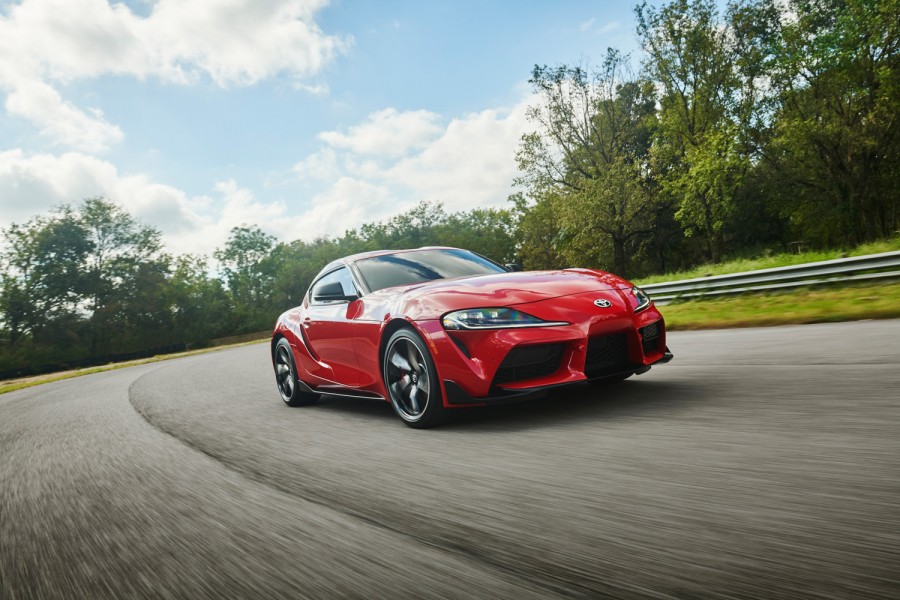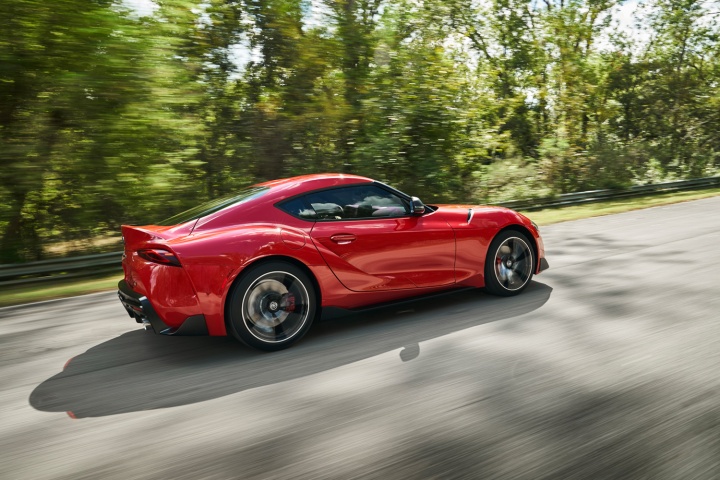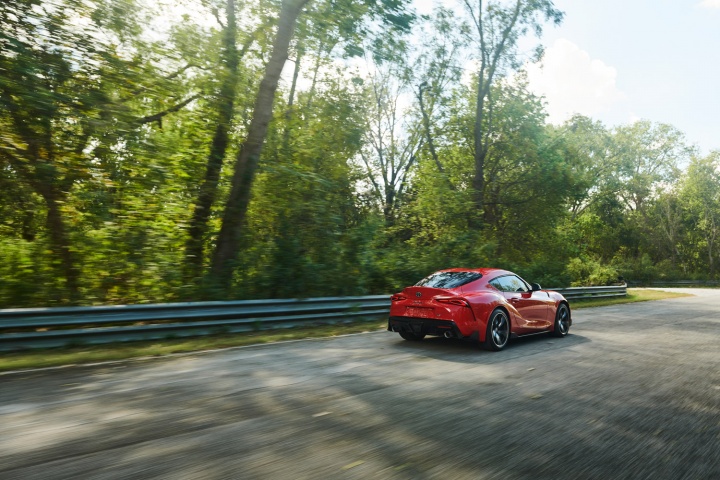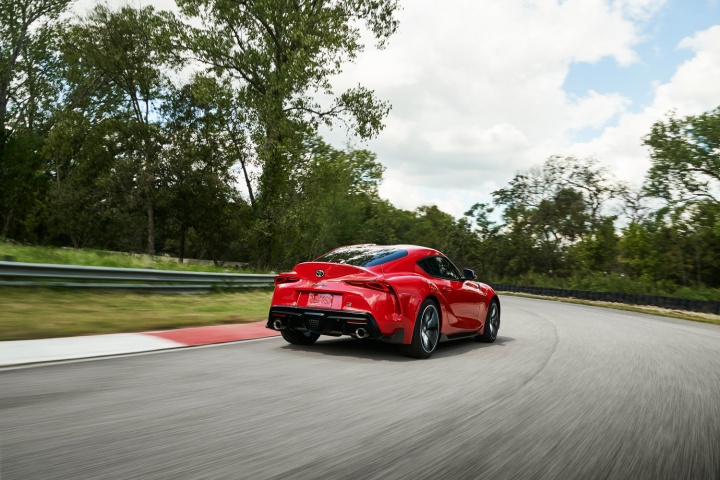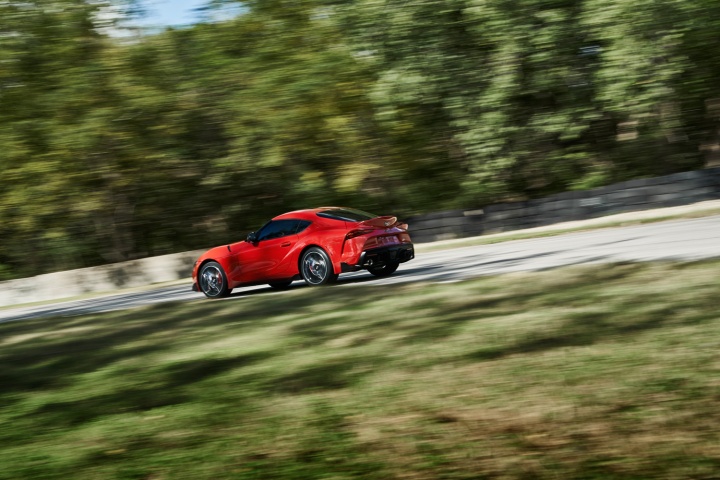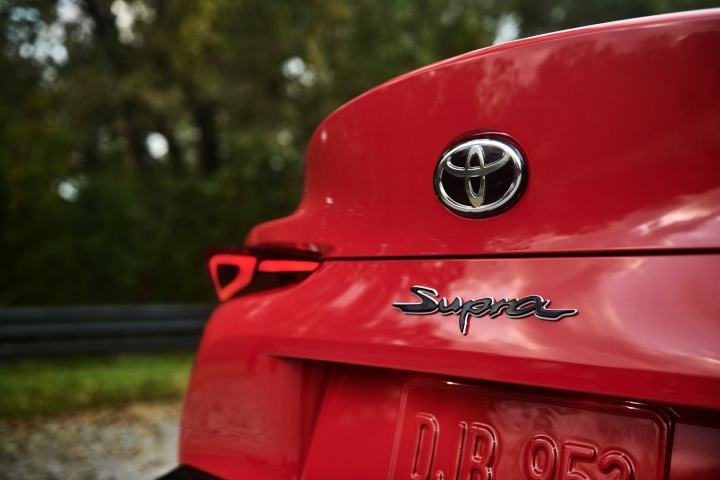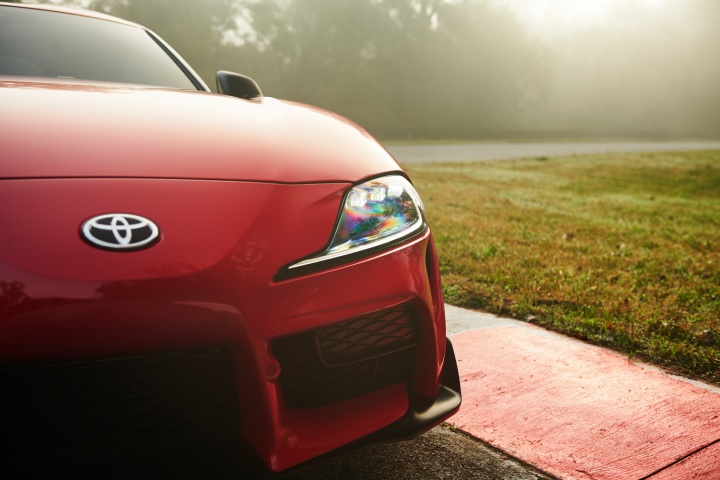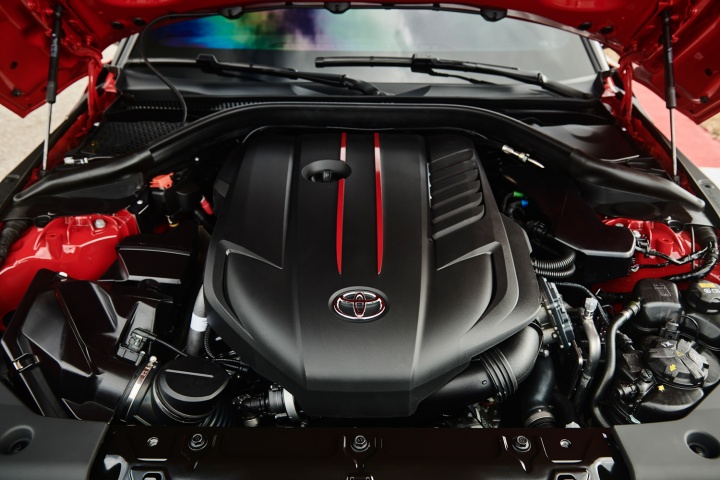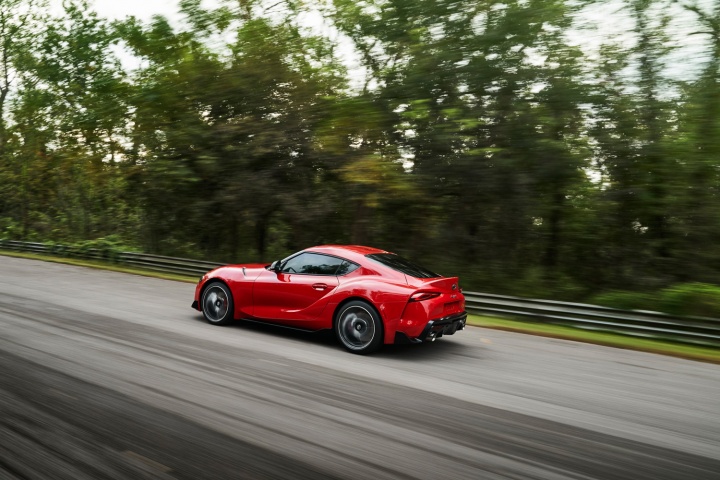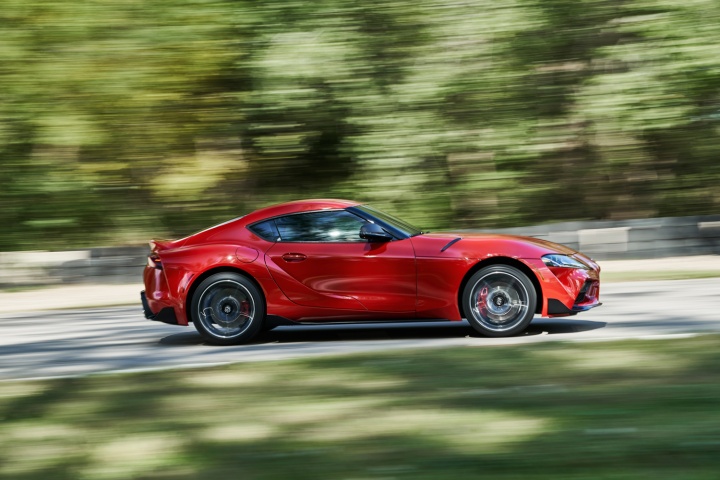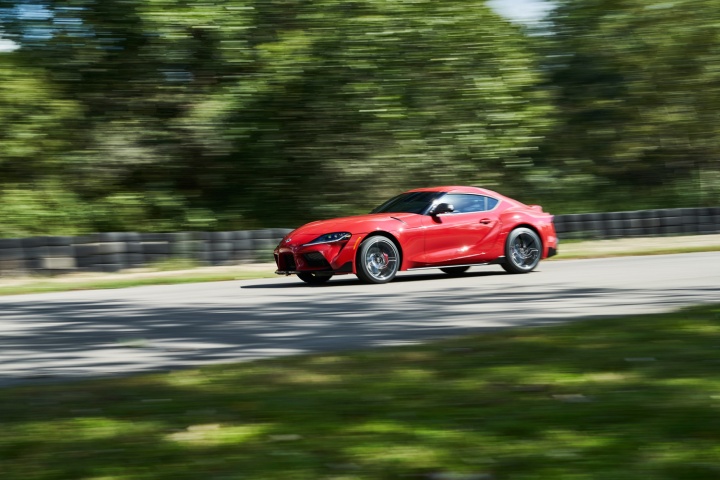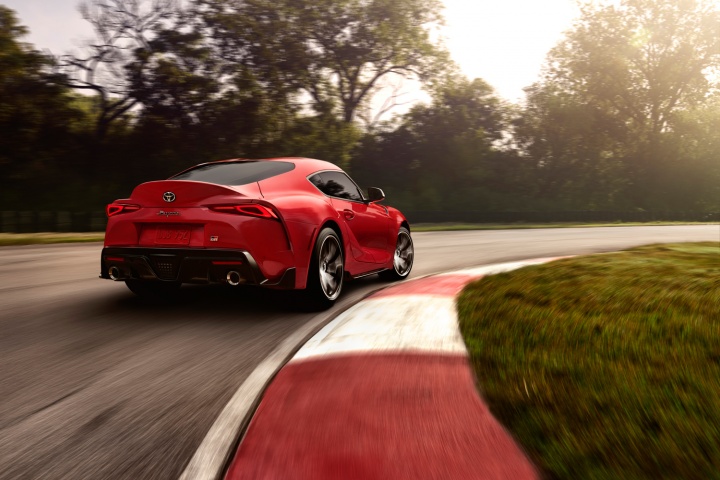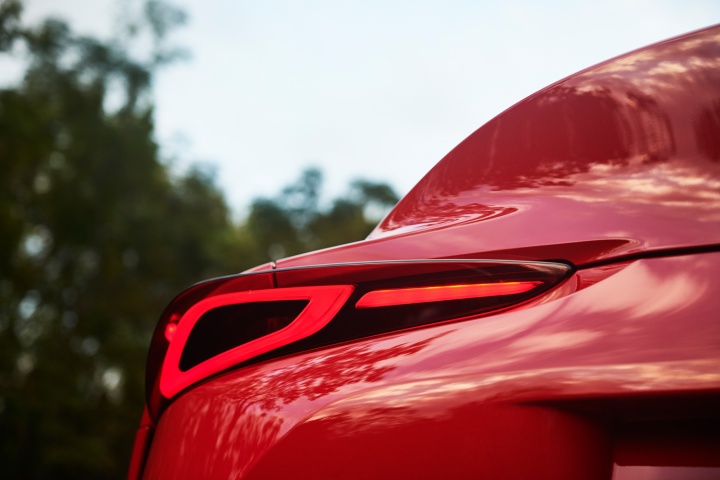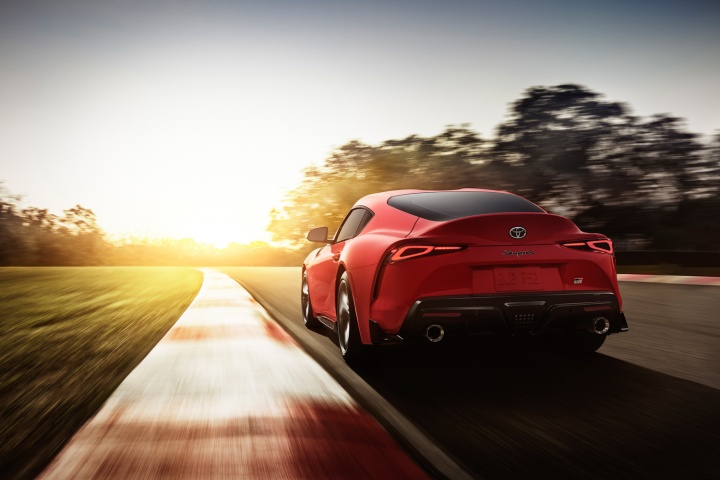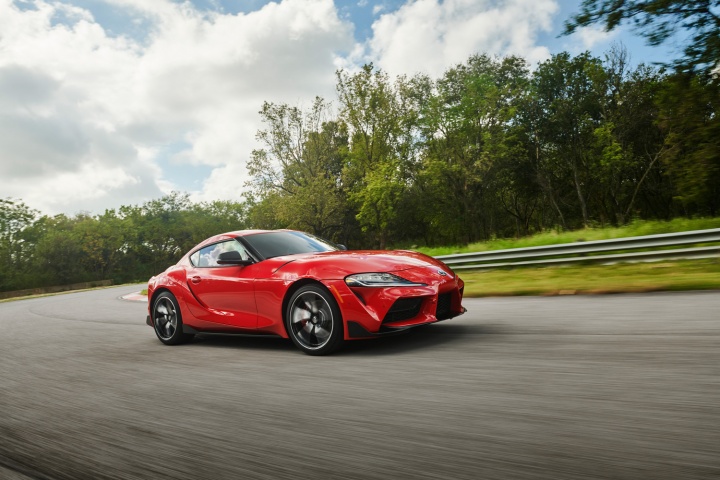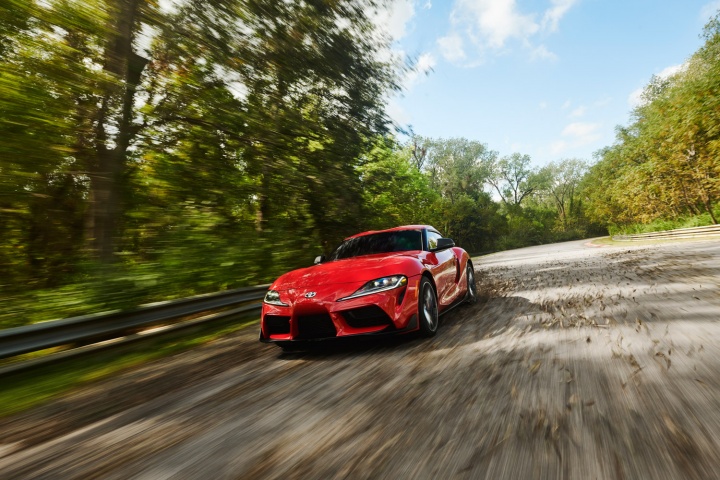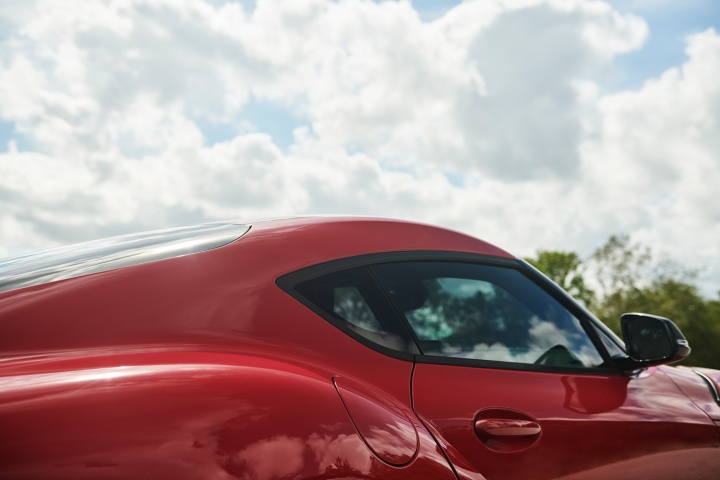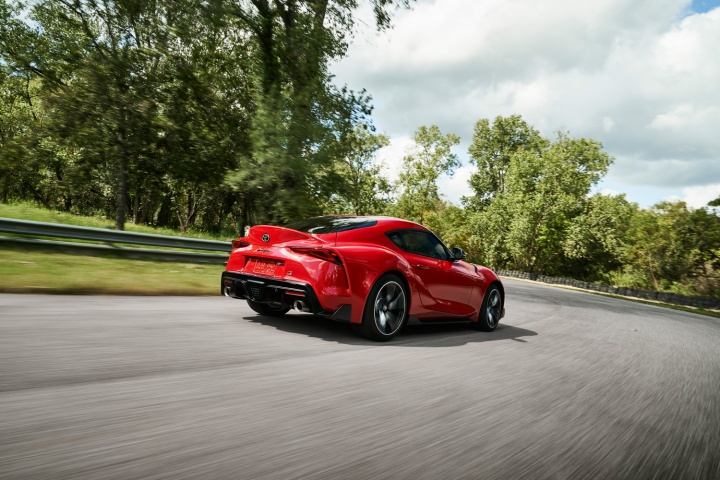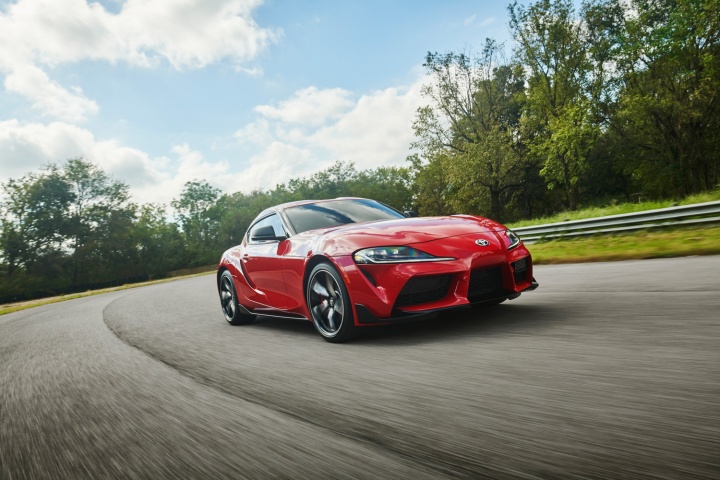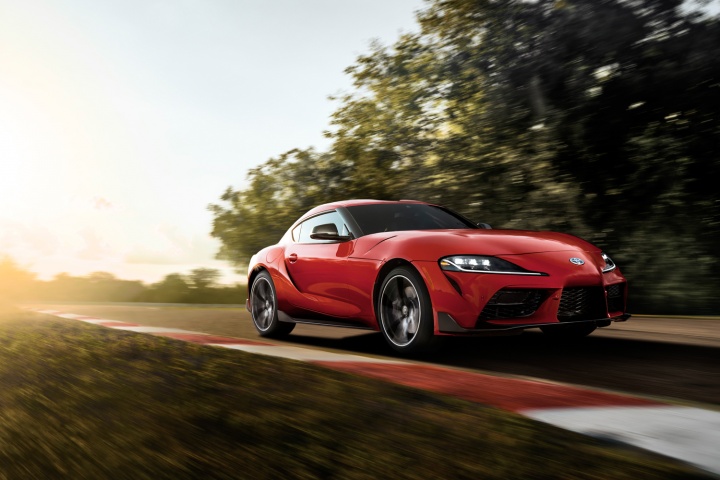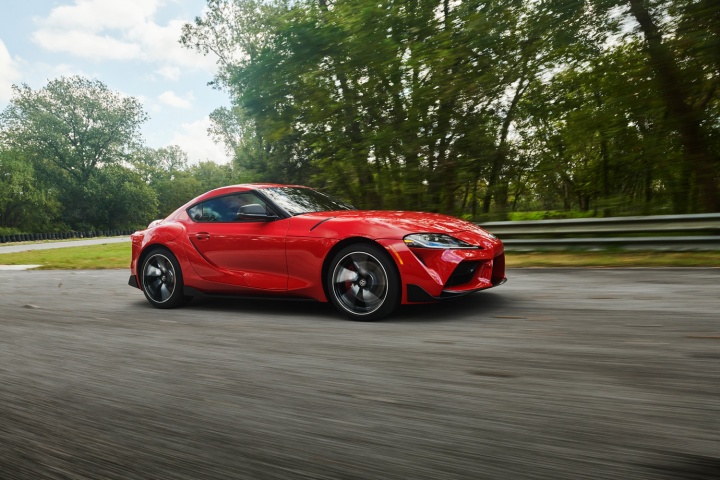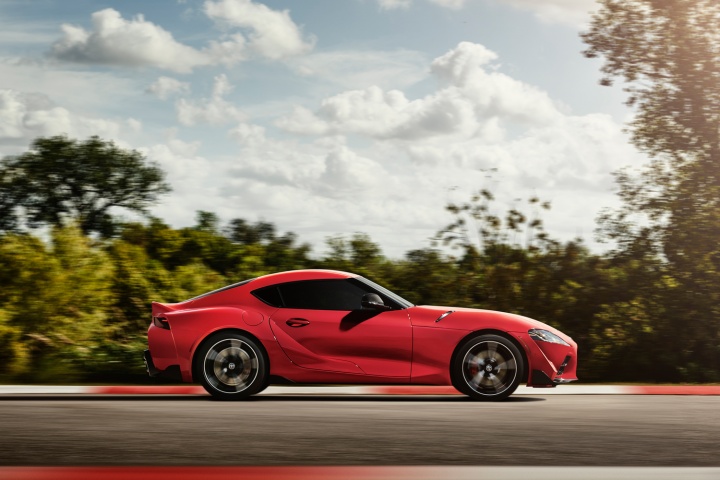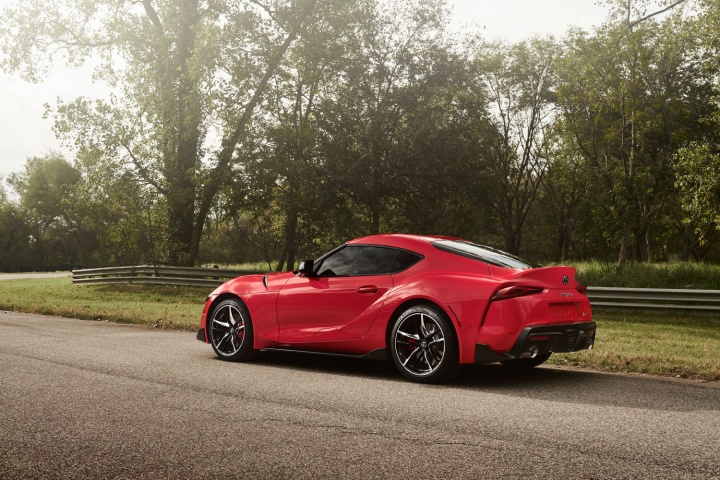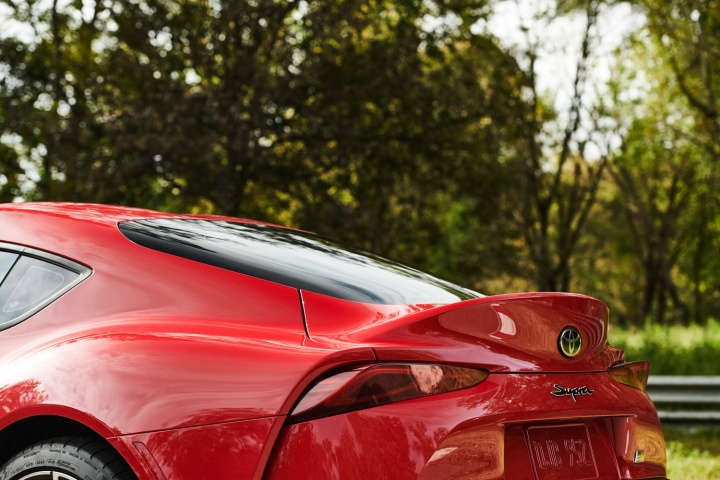What's the news?
Well, we've been waiting long enough but Toyota has finally revealed, in full, the all-new Supra, the company's first proper sports car in more than two decades. Engineered by the legendary Tetsuya Tada (the man behind the fab little GT86 coupe) the new Supra inherits the mantle of the iconic 1990s A80 Supra, and Toyota's other sports cars all the way back to the 1960s 2000GT.
It's heavily based on the architecture and engine of the new BMW Z4 (the two cars were designed as a shared project by the two companies, although the engineering and general philosophy of both differed widely from the start) so it gets the same 340hp twin-scroll turbo straight-six engine as the car from Munich. Toyota quite openly admits that this is basically a BMW unit, albeit with Toyota input and software.
It also has 500Nm of torque, and drives the rear wheels (and the rear wheels only) through an eight-speed automatic transmission.
Toyota calls the styling "Condensed Extreme" and it gives the Supra a very dart-like look, with the whole car appearing to stretch back from a needle-like nose (with race-car style wing elements in the lower front bumper) all the way back to a tautly drawn roof and boot, with voluptuous rear wings. It's been designed around a 1.55 'Golden Ratio' between the length and width to ensure the sharpest possible handling (which we've already sampled; click here to read our review).
Inside, there's a lot of BMW-style switchgear and screens, but the overall architecture is different to that of the Z4, and Toyota says that the Supra's cabin has been wrapped around the driver in the manner of a single-seat racing car. The bucket seats too are said to draw on Toyota's racing experience, and the whole car has been developed by the same Gazoo Racing team as has delivered the company's recent successes at Le Mans and in the World Rally Championship. It's the start (alongside last year's short-lived Yaris GRMN hot hatch) of a new brand of on-road sports models and on-track racers for Toyota.
Thanks to a launch control function, the Supra can sprint from 0-100km/h in just 4.3 seconds (quicker than the distantly related Lexus RC F, which has an extra 200cc, two cylinders, and 110hp) and there's an electronically controlled differential to both help put the power down, and to tweak the Supra's line when cornering. Much of the development of the chassis was, of course, done on the Nurburgring, but Toyota spent a lot of time doing on-road development too. The Supra has a 50:50 weight balance, front:rear, and the steel-and-aluminium chassis is actually stiffer than that of the old, all-carbon, Lexus LF A supercar.
Standard equipment will include the active differential, adaptive suspension, and 19-inch forged alloy wheels with a high-performance brake package. Other features include dual-zone automatic air conditioning, Adaptive Cruise Control with stop and go, smart entry and push-button start, steering wheel with leather trim and auxiliary switches and a digital combimeter in the driver's instrument display. LED technology is used for the adaptive headlights, rear lights and daytime running lights, and the mirrors (door mirrors and rear-view mirror) are all auto-dimming. Further convenience is provided by rain-sensing wipers and a rear-view camera.
The sports seats are power-adjustable (including lumbar support), with integrated heating and memory functions. The infotainment specifications feature a 10-speaker audio system with 8.8-inch display, navigation system with Supra Connect (in applicable markets), Bluetooth and USB port. Safety features include Supra Safety + Package, which comprises Blind Spot Monitor and Lane Change Departure Alert, Rear-Cross Traffic Alert, Rear-end Collision Alert, and Intelligent parking sensors with automatic braking. In addition, there is an E-Call function that will send an automatic location alert to the emergency services in the event of a serious collision and a Tyre Pressure Monitoring System.
Toyota plans to bring 900 Supras to the European car market this year, and the first 900 customers who put their names down will get the chance to access what Toyota calls "money-can't-buy" experiences to go with their new car. There will also be a limited-edition A90 version (reflecting the code-name of the car while it was in development) which will come with Storm Grey matt paint finish, matte-black alloy wheels and a driver's cockpit upholstered in red leather. Just 90 of those will be made for Europe.
Toyota President Akio Toyoda, who is also a 'master driver,' said on the Supra: "Back in the day, I spent countless hours driving an old Supra at Nurburgring to become a master driver. Supra is like an old friend that holds a special place in my heart. While other manufacturers were putting their beautiful new prototypes which they were going to introduce through the paces, I was driving an old Supra that was no longer in production. So even though Toyota had no plans to make a new Supra, just like a lot of other die hard Supra fans around the world, I secretly wanted to make it happen. The new GR Supra was born through testing at Nurburgring, and I can honestly say that it is a car that is fun to drive and better than ever."
Toyota Supra Chief Designer Nobuo Nakamura said that: "With Chief Engineer Tada pursuing driving pleasure, I knew that my mission was to create a design that would be visually and physically exciting to sports car fans. By using a straight-six front engine, rear-wheel drive layout - something rarely seen in today's cars - I was able to reach something beyond Toyota's boundaries."

